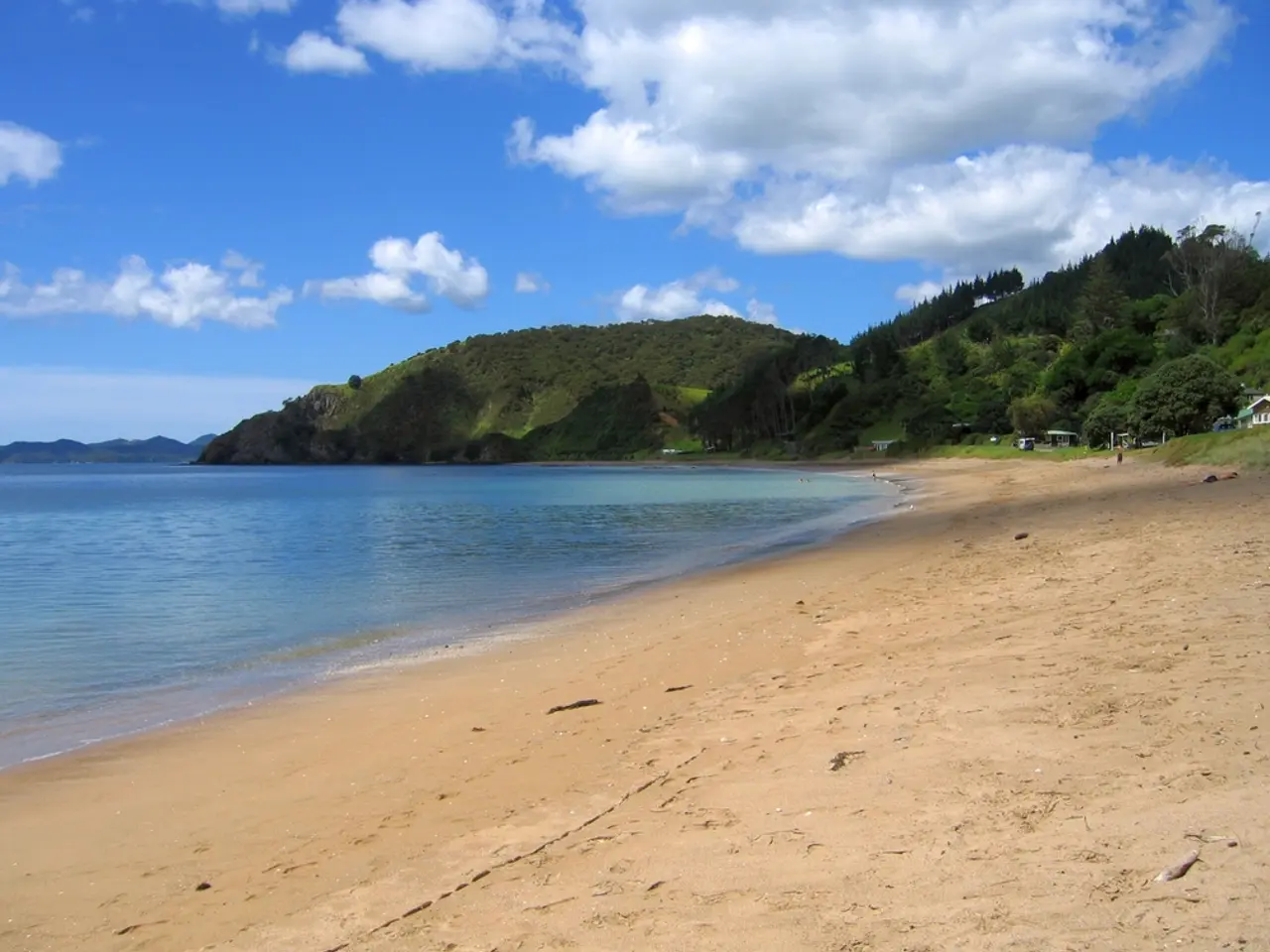Rising sea levels pose a threat: North Sea island faces earliest submergence
Headline: North Sea Islands Face Grave Threats from Climate Change, Warn Simulations
The North Sea region, home to several picturesque islands, is under threat from rising sea levels and climate change, according to a study conducted by HafenCity University Hamburg. The research predicts that islands such as Borkum, Juist, Norderney, Baltrum, Langeoog, Spiekeroog, and Wangerooge could face significant challenges by the year 2100.
In a pessimistic scenario, more than 10,000 square kilometers of North Sea land could be flooded, displacing over 750,000 people. The island of Pellworm could disappear completely, while larger islands like Sylt, Föhr, and Spiekeroog would also be affected. Even in a milder scenario of a global warming of about 1.8 degrees Celsius, protective measures are urgently needed for the North Sea islands.
The study suggests that these low-lying islands are vulnerable to increased flooding, erosion, and potential land loss due to projected sea level rises that could range between approximately 0.3 to over 1 meter by 2100. The combined effects of thermal expansion of seawater, melting of polar ice sheets, and storm surge intensification exacerbate the islands' vulnerability.
Natural protective barriers such as dunes and salt marshes could be overwhelmed, leading to habitat loss and challenges for human settlement and infrastructure. Adaptive coastal management measures, such as reinforced dikes, managed retreat, or nature-based solutions, may be necessary to mitigate these impacts.
The uninhabited North Sea island of Memmert is at risk of complete flooding with a moderate climate warming of 1.7 degrees Celsius. However, Memmert's potential salvation lies in merging with a nearby sandbank over time.
These findings align with general scientific consensus that global sea levels are likely to rise between 0.28 and 1 meter by 2100 due to climate change, with possibilities of even higher increases depending on ice sheet dynamics in Greenland and Antarctica. While some islands might still remain habitable with strong adaptation efforts, unprotected areas could face severe inundation and erosion, threatening ecosystems and local communities.
In summary, HafenCity University Hamburg’s simulations foresee serious consequences for these North Sea islands, including increased flooding, coastal erosion, and land loss by 2100 if current climate trends continue and insufficient protective measures are taken. The study serves as a stark reminder of the urgent need for action to protect these vulnerable islands from the effects of climate change.
- Science predicts that the North Sea islands' vulnerability to climate change, including increased flooding and erosion, stems from environmental science factors such as sea level rises, thermal expansion of seawater, and storm surge intensification.
- In the realm of health-and-wellness and fitness-and-exercise, it becomes crucial for the inhabitants of the North Sea islands to maintain their physical fitness and be mentally prepared for potential displacement due to climate change.
- Climate change not only threatens the existence of these North Sea islands but also poses environmental-science challenges like habitat loss and potential ecological imbalance, emphasizing the need for decisive action.




